Less than three months ago, the stricken sailors of the aircraft carrier Theodore Roosevelt trundled off their ship in San Diego following a deployment that saw them waylaid in Guam after a COVID-19 outbreak killed one shipmate and infected roughly a quarter of the approximately 5,000 others onboard.
Now, the TR is getting ready to deploy again in the coming months.
Several sources from within the carrier’s community tell Navy Times that the crew has been told to expect to deploy anywhere from November to January, with a restriction-of-movement period, or ROM, taking place as soon as next month to make sure everyone is COVID-19-free before they ship out.
The Navy won’t comment on the deployment’s specifics, but officials noted TR is in a phase where it must be ready to deploy on “short notice” and that “deployment resiliency” resources and other assistance are being provided to the carrier’s crew and family members.
Some community members said this week that while they had been previously told to expect back-to-back deployments ahead of TR’s homeport move to Washington state for maintenance in 2021, the harrowing cruise earlier this year makes another deployment so soon sting that much more.
“There’s a lot of pent-up frustration with Big Navy,” said one TR spouse, who along with others interviewed for this report requested anonymity to avoid repercussions against their sailors. “Like, what are you doing?”
The “double pump” of the TR — sending it out on two deployments in the same 36-month readiness cycle — follows news that the carrier Dwight D. Eisenhower will be doing the same thing soon from the East Coast early next year.
RELATED
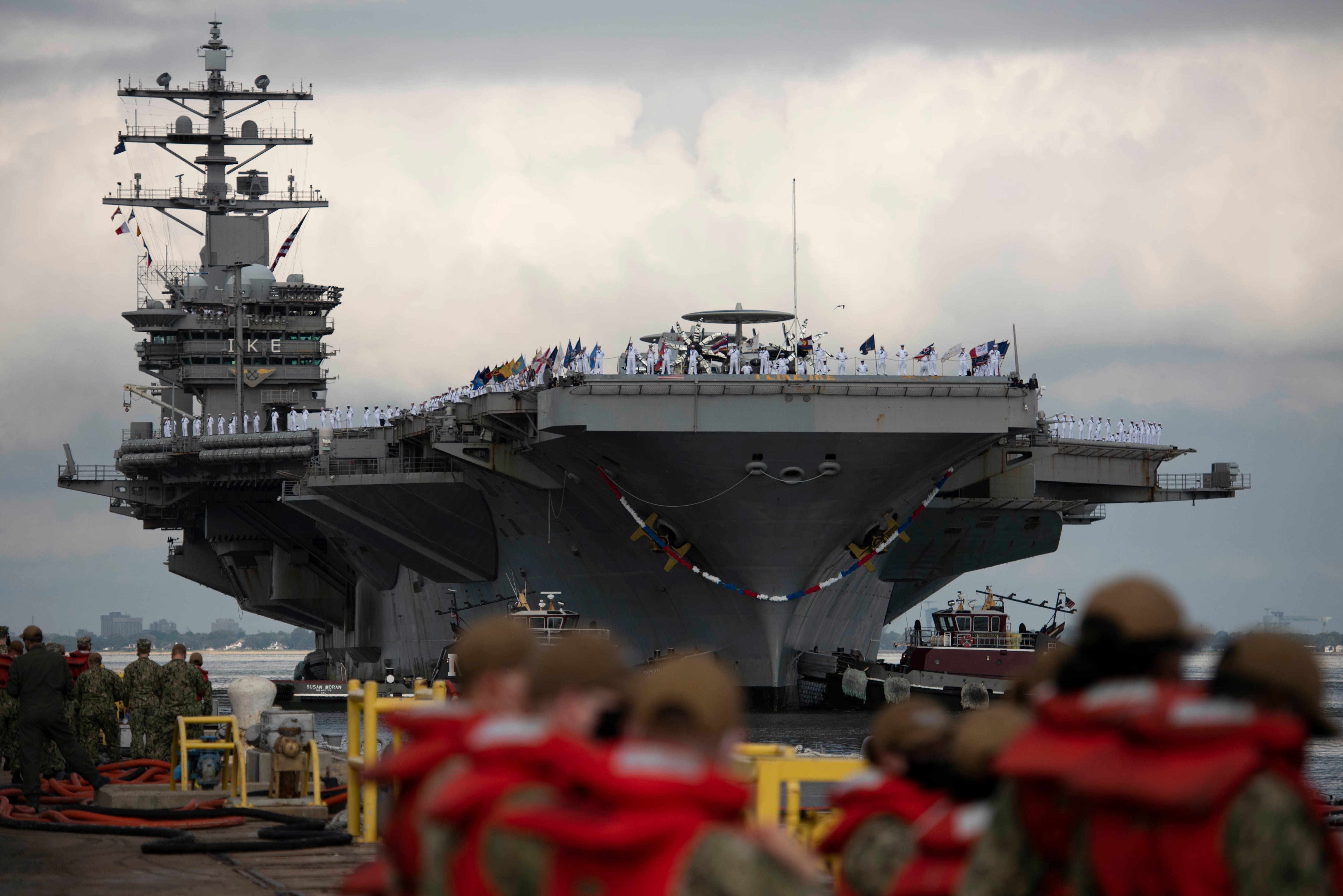
Ike completed a record-breaking 206 consecutive days at sea and only returned to Norfolk on Aug. 9.
A second double-pump deployment raises questions about what is driving the need to make such demands of sailors and their equipment. Roosevelt completed her midlife overhaul and refueling seven years ago, meaning overuse is sapping its planned 50-year hull life.
Families feel the Navy is demanding too much of the crew in the middle of a pandemic and is not adequately communicating.
For some sailors and spouses, it feels like the two carriers that shouldered the heaviest burden this year — TR and Ike — are getting screwed.
The double whammy of this year’s nightmare deployment, which saw the Theodore Roosevelt’s popular captain fired by the acting secretary of the Navy, and a second deployment over the holidays is leading some members to reconsider their future in the Navy, while others fear how Big Navy will respond if another outbreak happens onboard.
“In the COVID, world, why are we pushing the two ships that had the worst deployments possible back out so quickly?” another asked.
It’s not a question Big Navy appears willing to answer.
Officials declined to discuss when TR will ship out or why it’s going back out again so soon.
But Cmdr. Zachary Harrell, a spokesman with Naval Air Forces, said TR is currently in the sustainment phase of the Optimized Fleet Response Plan, or OFRP, where “the ship and crew are expected to maintain readiness to conduct deployed operations.”
While most operations conducted during the phase are planned well in advance, Harrell said that forces in that phase can also be tasked on short notice.
“We recognize support to our Sailors and their families is a significant part of mission readiness and the U.S. Navy is committed to keeping Sailors and families informed about current and future deployments to the best of our ability, allowing families time to prepare and plan,” Harrell said.
The Navy also has “a number of resources and programs" too help sailors through such times, he added.
“We are working with the Theodore Roosevelt to supplement their resources and maximize available assistance,” Harrell said.
“Every single day with this ship is exhausting”
But 10,000 feet below Big Navy, on the ground in San Diego, such official reassurances have thus far provided neither stability nor predictability for some TR sailors and spouses, who feel they are getting a raw deal.
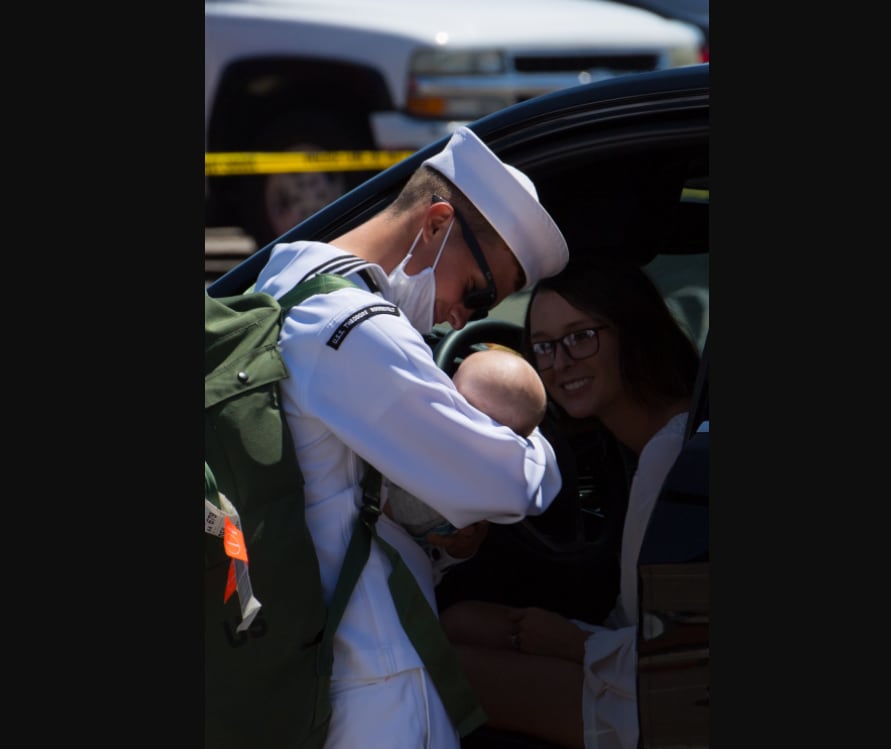
Some in TR’s community wonder why they’re the ones who have to go back out again so soon.
“Everyone has the ability to change who goes out and when they go out in Big Navy,” a spouse said. “And not to call the Lincoln out, but the Lincoln has been home since January of this year.”
Several TR spouses told Navy Times that this year’s COVID-19 cruise, the looming deployment and the home port change next year have them looking to leave the sea service.
“It’s taken a toll on everyone’s mental health, everyone that I know from the ship,” one spouse said. “It’s draining and exhausting and it never ends.”
“Every single day with this ship is exhausting.”
RELATED
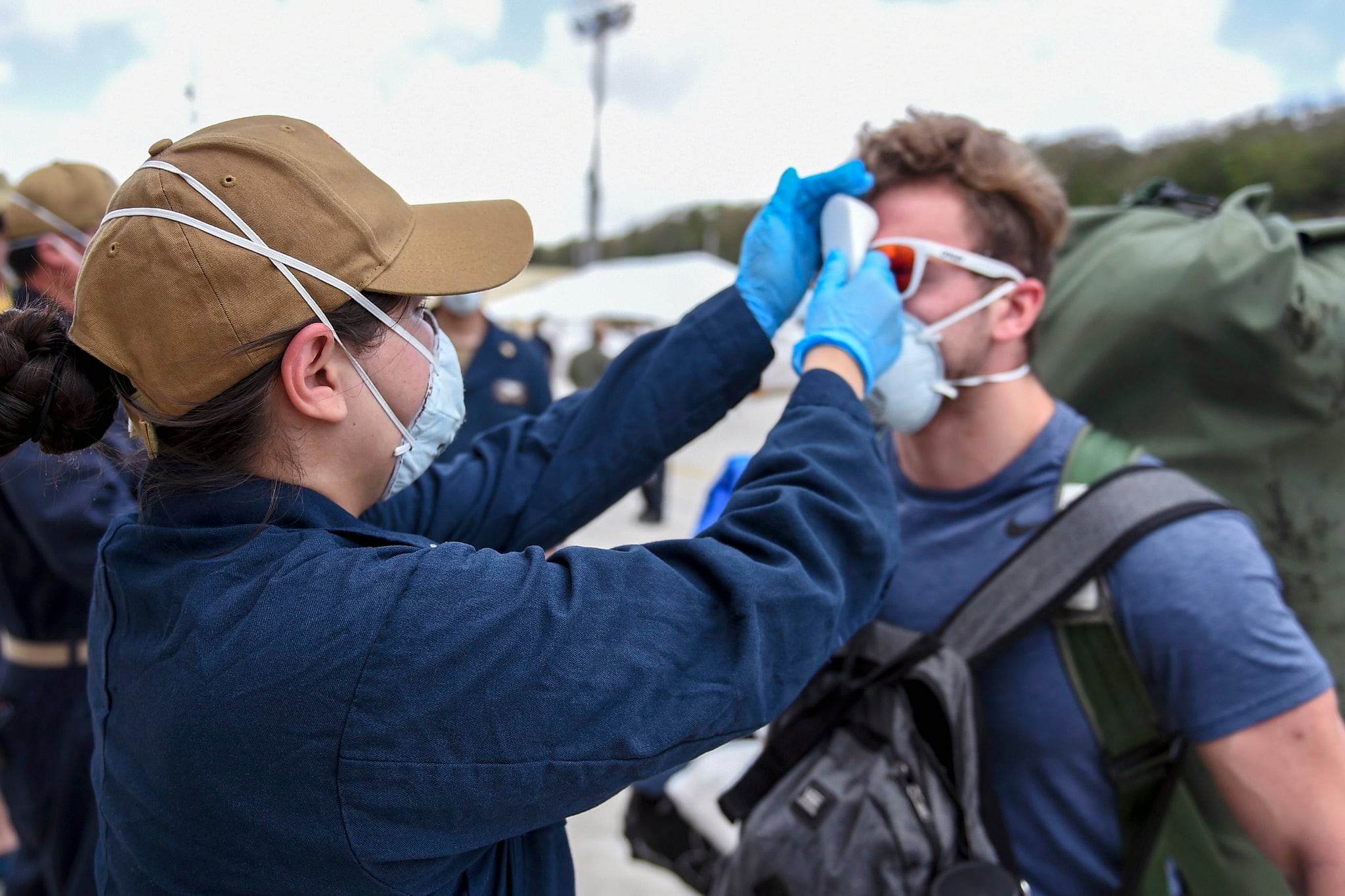
Several TR spouses said they wouldn’t be surprised if the ship sees an exodus in the near future.
“Look at the retention rates from the Roosevelt or the Ike in a few years and tell me the percentage that got out,” one spouse said. “Look at the numbers and look at the ships and look at the cultures that have been created.”
“We always thought we were going to be long term, stay in 20 years,” one spouse told Navy Times.
But this year’s events “put it into perspective that we’re just numbers and not people,” they added. “It’s really changed both of our outlooks.”
“They’re trying to act like (this year’s deployment) wasn’t a big deal,” the spouse said. “I don’t think they’re taking into consideration the impact, mentally and physically, that the deployment took on them.”
The spouse expressed fear that, after Capt. Brett Crozier’s firing — a move sparked by a plea for more help he sent to the brass that was leaked to the media — will stymy anyone advocating for TR sailors should infections occur again.
“What if numbers spike again, how do we know they’re going to take action?” one spouse asked. “No captain is going to want to put their neck on the line for them.”
“It’s absurd to plan back-to-back deployments in general,” another said. “You’re giving nobody time to recoup or get back together. Then you add a COVID world.”
Some question a lack of hard information from the command thus far and wonder why their loved ones are being tapped to go back out so soon.
TR got back underway this week to conduct carrier qualifications, and some spouses said they haven’t been told when their sailors will return.
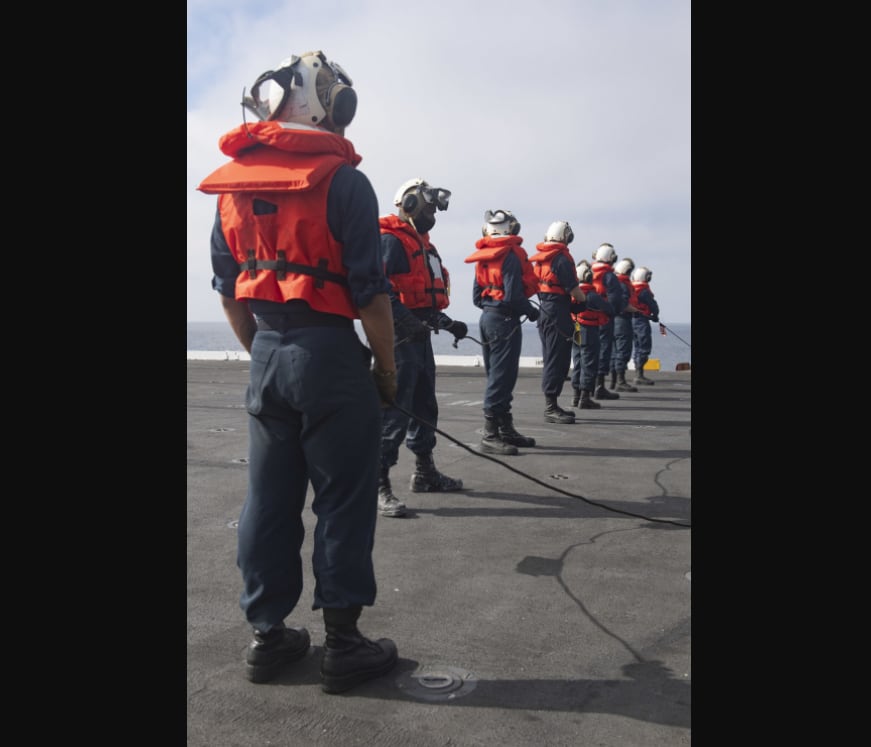
One said earlier this week that they hadn’t heard “a single word from the new commanding officer,” Capt. Eric Anduze, who assumed command in late July after the ship returned to San Diego.
“Nothing from him, nothing from the ombudsman, no pre-deployment meetings have been scheduled,” the spouse said. “How are you going to prepare families?”
Officials with the ship pushed back on claims that the command has been out to touch.
TR’s leadership plans to hold a private online townhall next week for the community, according to Lt. Cmdr. Jacqueline Pau, the carrier’s spokeswoman.
Anduze has also conducted sailor focus groups, provided updates over the ship’s main circuit and published information in the ship’s magazine, while engaging with the family readiness group, Pau said in an email.
“Theodore Roosevelt leadership understands how important clear communication is to our Sailors and our families,” she said.
Undue wear and tear
The double pump deployments for Roosevelt and Eisenhower this winter raise questions about the Pentagon’s stewardship of some of its priciest assets. Ike is nearing the end of its hull life and experts told Defense News that deploying the carrier twice in one year would almost certainly require the ship to enter a prolonged and expensive shipyard availability.
TR has been in service for 34 years, the same age that Ike was during its last back-to-back deployment in 2012 and 2013. Ike’s experience back then could portend what is to come for TR after its double pump.
Those deployments in 2012 and 2013 came with enormous consequences for Eisenhower, with workers taking over two years to fix the ship during a maintenance period that was supposed to last just 14 months. When Ike deployed again in 2016, the ship was in such rough shape when it got back that it couldn’t get out of the shipyards in time for a scheduled deployment, meaning the carrier Truman had to make three deployments in just four years, including a double-pump last year.
In an email to Defense News earlier this month, the Navy fleet’s deputy readiness officer said the service continues to manage the readiness challenges that forced Ike into a double pump in 2012 and 2013 as Fleet Forces Command implements its new deployment system, the Optimized Fleet Response Plan, and that sometimes two deployments in the same 36-month readiness cycle is just the best option.
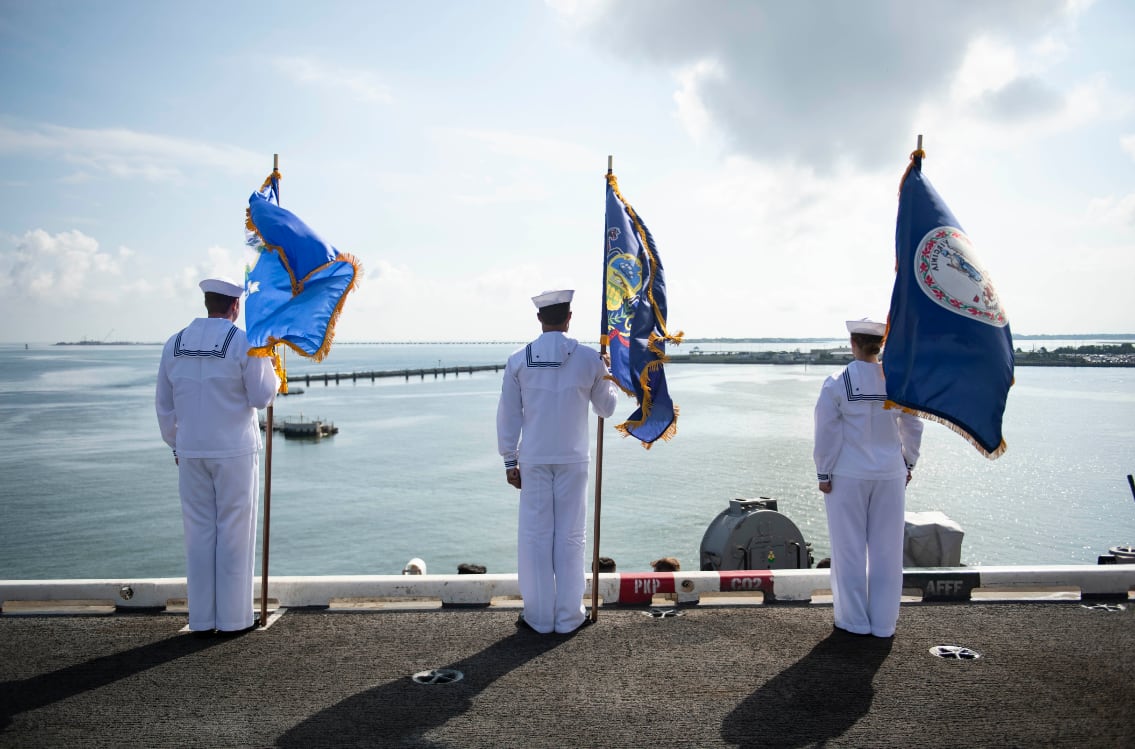
“We continue to recover readiness from the conditions that led to the introduction of OFRP in 2014,” Capt. Dave Wroe wrote. "Specifically, over consumption of readiness, lack of budget stability, and the resulting impact to the industrial base. At six years of OFRP maturation, we are experiencing tangible improvements with manning, mission capable rates, and ship availability performance.
Because the fleet was in such a deep readiness hole when OFRP was being implemented in 2014 and 2015, it is taking the entirety of a nine-year maintenance planning cycle to dig out, Wroe said.
And while fleet planners take the strain on an individual crew into account, “a second deployment per cycle is sometimes the best overall course of action” to spread the burden throughout the fleet and not set back the gains in readiness the fleet has made over recent years, Wroe added.
But what the history of the Nimitz-class carriers makes clear is that the double-pump deployments for Ike and Roosevelt this year won’t be without consequence.
Aircraft carriers are especially hard hit by being overused, said Bryan Clark, a senior fellow at the Hudson Institute, in an interview with Defense News earlier this month.
“It’s hard for people outside the Navy to recognize how much of a readiness debt it is to deploy an older ship like the Eisenhower like that,” Clark said. "When you force the ship deploy more than it was designed to deploy, especially a complicated ship like a carrier, so many things that fail or get degraded that it just takes a long time to dig out of that hole.
“And because the carriers are so large and complex, and because it’s hard to do the maintenance for them underway, the debt is very real and needs to be repaid.”
Geoff is the managing editor of Military Times, but he still loves writing stories. He covered Iraq and Afghanistan extensively and was a reporter at the Chicago Tribune. He welcomes any and all kinds of tips at geoffz@militarytimes.com.
David B. Larter was the naval warfare reporter for Defense News.





